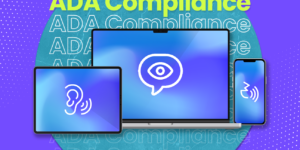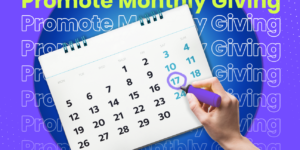Fundraising is about building relationships. In fact, that’s all it is. When we ask, we’re not just requesting money. We’re reaching out to interested parties who might want to partner with our organizations in order to achieve a common goal together. Asking isn’t akin to passing the hat, it’s more like inspiring those around us to participate in what we do and why we do it. When you think of the organization-donor bond as a partnership instead of a transactional interaction, you’ve set up a situation where a relationship will grow and your organization will flourish.
In order to begin this process you must be personal in your communications with existing and potential donors. This goes far beyond your head of development. Everyone within an organization, particularly in small shops, should be familiar with these techniques since every touch with an outside individual is one that can lead to a partnership. Phone calls, written communications, signups/registrations, special events, an unexpected office visit and social media interactions are all fair game. Why? People give to people–nice people–and these first encounters set the stage for whether or not this person wants further a relationship with your organization or not.
Today we’ll uncover some of the primary benefits of being personal and provide some tips to help you start creating more personalized communications with donors and prospects.
How does being personal help?
Let’s think about this in terms of friendship. No one wants fairweather friends that only seem to come around when they want or need something. Lasting friendships are built on mutual respect, trust, and like-mindedness. When a relationship blooms from shared values or positive, fun interactions that’s a relationship that’s built to last. You can’t always have your hand out, so take the time to communicate with donors and prospects about what you share as opposed to what you need.
Good relationships inspire the following:
- People want to work with you
- Improved stewardship
- Excitement about your activities
- More consecutive gifts
- Volunteer interest
- Sharing with friends
Success in these areas leads to increased donor retention and ultimately, increased gifts over time. Can you do without any of these? Moreover, can you afford to?
So how can we make communications more personal?
Personalization of communications can be done on a small scale or on a grand scale, it all depends on how far you want to take it. Understanding some basic principles for personalized communications, particularly with email appeals/updates or direct mail communications, can help you get started down the path to more relevant and engaging ways of interacting with your audiences.
The Do’s and Don’ts of Personalization
- Do segment lists by donor category or other classifications
- Don’t send a generic message to all your donors
- Do share stories of impact in terms of how donors made it happen
- Don’t spout off superficial statistics or numbers irrespective of donors
- Do use names and other relevant information unique to donors
- Don’t address messages “Dear Friend” or any other generalization
- Do apply variable techniques with images and lay out (especially by generation)
- Don’t assume that donors are one and the same
- Do take the time to ask questions and get to know your prospects
- Don’t presume people just want to give simply because they can
Remember, you’re building a relationship. Take the time to imagine being the person receiving your communications. Would you want to be on the receiving end of a blatant ask from someone you don’t know? Of course not, it’s off-putting. You’ve got to court your prospects and make sure you hear them and understand the kind of donor relationship they want to engage in. Pace yourself and put the donor and your stories first, and keep the ask in your back pocket for when the timing is right.
The Wrap Up
Taking the time to be personal will help you in all aspects of fundraising. It’s important to respect the boundaries of others and to make sure you’re forging a meaningful relationship. The partnership between an organization and their donors is invaluable. Remember that they’re making an investment in you, so it’s important to reciprocate. Not every communication needs to include an ask, but it shouldn’t occur without intention. Stick to your schedule, make the donor your hero, and keep building.
Like what you see? Stay in touch!
You Might Also Enjoy:
+ Ways to Play Around with Personalized Print
+ Knowing When Personal is Too Personal
+ 1:1 Marketing Tactics for E-mail












